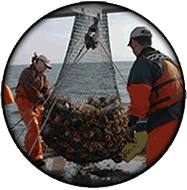

| Logbook | Date | Species | Catch |
|---|
Fishery Analyst Online HELP
IntroductionThe data
The interface
Select data and display points
Exploring query results: map, table and chart view
Grid analysis
Fishery Analyst Online is a web GIS application aiming to effectively analyze and visualize temporal and spatial patterns of fishery dynamics. The main functions are quantitative estimation and visualization of catch, effort, fishing success and their variation in space and time. It also provides a mean for analysing of fishing vessel utilization, data quality control, and deriving information on the location of important economic and threatened species. It was developed using the ArcGIS Server Java Script APIs, the Dojo framework and Google Chart APIs. The application was born as a web evolution of the successful ArcGIS Desktop Fishery Analyst application. The online version aims to take advantage of new web and server based technologies offering improved accessibility, data sharing, integration, centralization and resources optimization beside several new and improved functionalities. Institutions such as national, federal and international agencies and universities working in the domain of fishery science can benefit from this application.
For further information visit: http://www.mappamondogis.com or write an email to info@mappamondogis.com
The application is built to query, analyze and visualize fishery data including information on the location of fishing, the species caught and the effort applied (in terms for example of number of hooks deployed or hours of net deployment). The data structure is well adaptable to all types of fisheries around the world from the Pacific Ocean, to the Atlantic, North Sea and Mediterranean as well as to different ways to express fishery parameters.
The application interface makes use of Dojo dijits that allowed to easily organizing the content in an efficient layout. All the query, analytical and configuration functionalities are grouped on the left side of the interface and are accessed on-request by mean of accordion panes. On the right side various types of output are organized in separated tabs, including a map, a table, a chart view and this help page. A navigation toolbar provides the tools to navigate within the map (panning, zooming in and out and moving to full, previous and next extent).
Select data and display points
The first step consists in selecting the fishery data by choosing the region of interest, the species of interest, the name(s) of the fishing vessel or research cruise, a date interval and specimen characteristics when available (length class, sex, maturity stage). Additional or different selection criteria can be easily developed upon request.
Exploring query results: map, table and chart view
Query results are displayed as points identifying fishing or survey locations on the interactive map with a graduated color symbology based on catch values. If enabled, a data grid shows the details of the selected records. The chart view provides a number of bar charts displaying the catch aggregated over months, specimen length classes or research/fishing cruise
Under the grid analysis accordion tab the user can specify an analysis grid based on equal size cells by which point data will be aggregated. The the size of the cells can be provided in decimal degrees. A confidentiality factor allows specifying the minimum number of points in a cell for a cell value to be computed and displayed.

0

